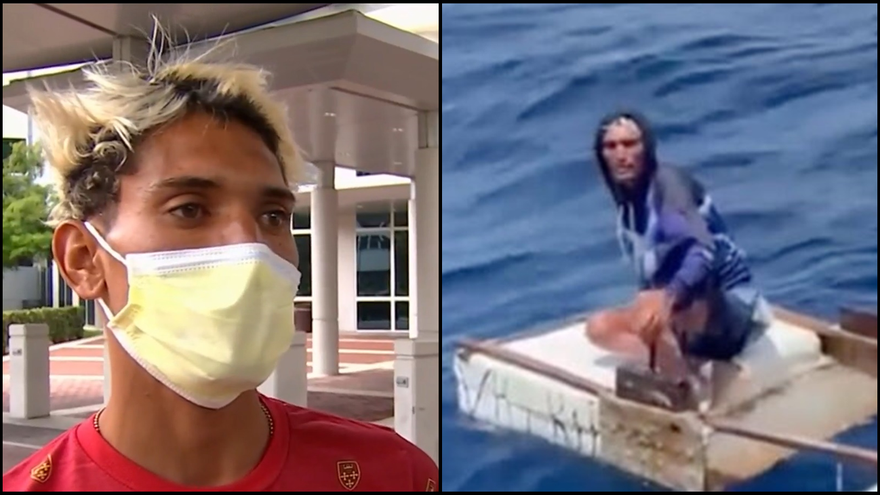
![]() 14ymedio, Havana | 2 September 2021 — After ten days at sea that left him on the brink of death, Cuban rafter Julio Cesar Capote will be able to begin his asylum process on U.S. soil. “I didn’t care if I died or lived,” the 21-year-old confessed to Telemundo 51 on Wednesday.
14ymedio, Havana | 2 September 2021 — After ten days at sea that left him on the brink of death, Cuban rafter Julio Cesar Capote will be able to begin his asylum process on U.S. soil. “I didn’t care if I died or lived,” the 21-year-old confessed to Telemundo 51 on Wednesday.
Capote was rescued by the U.S. Coast Guard on August 25 in the vicinity of Fowey Rocks, in southern Florida, while sailing in a precarious six-and-a-half-foot boat. Due to his physical injuries and the degree of dehydration in which he was found, the rafter had to be hospitalized.
“I was thinking a lot of things, if I was going to make it, if I was going to die, what was going to happen to me,” Capote told the television channel shortly after being discharged from Jackson Memorial Hospital in Miami, from where he left accompanied by family members living in the United States.
The young man had his legs bandaged because of the burns he suffered during the crossing, which he made together with three other migrants, who, Capote himself explained to the Coast Guard, had died on the journey.
About the crossing, the rafter reported that the companions who died were young people. He left from Playa Herradura, in Mariel, Artemisa province, together with his uncle, Chenli Yoan Capote, 21, and siblings
Josue Gabriel, 22, and Karen Rojas Pareta, 18. “Three days later, the raft capsized and our food, water were dumped, everything,” he said.
“The sun began to burn us and the girl’s and her brother’s nails began to fall off, their hands began to peel, their ribs began to burn and she said ’I can’t take it anymore’ and jumped into the water with her brother. The brother was worse than her; from the time he left he was vomiting, dehydrated, vomiting blood and everything”, says Capote, who then stayed with his uncle, who “had already started to hallucinate.”
At another point “a piece of the raft fell off” and the uncle jumped into the sea to try to rescue the piece, but “the waves were too big and he was carried away.” He spent about ten days adrift until he was found by a citizen who was sailing south of Florida and alerted the Coast Guard.
Regarding the rafter’s legal options, Immigration attorney Willy Alllen told the television channel that, at the Customs office, there is the possibility of being granted the so-called ’parole’, a document with which, after a year and a day, he can opt for residency under the Cuban Adjustment Act.
The lawyer also said that they could eventually send him before an immigration judge, but he stated that cases like Capote’s are isolated, because most migrants intercepted at sea are medically treated and repatriated to Cuba immediately.
At the beginning of last August, a Cuban managed to pass the “Credible Fear” Review on the high seas in the United States. The migrant, identified as Ernesto Urgellés, according to his relatives, was a policeman in Cuba and had been intercepted along with other rafters, who themselves were returned a few days later to the island by the Coast Guard.
Urgellés cannot enter the U.S. while his asylum request is being studied, so he must remain at the Guantánamo base or in some third country that will provisionally accept him.
Translated by: Hombre de Paz
____________
COLLABORATE WITH OUR WORK: The 14ymedio team is committed to practicing serious journalism that reflects Cuba’s reality in all its depth. Thank you for joining us on this long journey. We invite you to continue supporting us by becoming a member of 14ymedio now. Together we can continue transforming journalism in Cuba.
